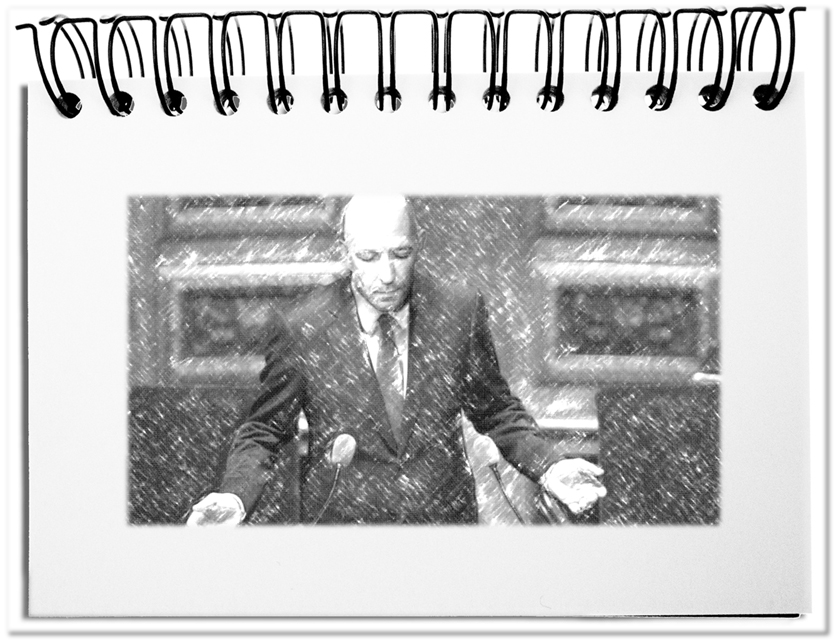The dilemma with PR is the way in which publications are used to consciously affect public opinion with methods adopted from propaganda, e.g., context hiding, new word creations or exaggerations. At the beginning of the twentieth century these effective practices were abused. These crimes cast a shadow across nowadays PR efforts. The conceit that lies in all measures to better communication conceals the fact that A L L messages A L W A Y S have an effect on the target group. Each message is interpreted personally, whether it has been consciously tailored to manipulate or whether it simply produces an unintended effect. The vast amount of information generates today a noise that cannot be avoided.
Fatally, even messages that are not consciously designed can have an effect that, in extreme cases, turns against the real message. For this reason, even the biggest adversaries of opinion-making are obliged to take care of their messages – or to remain silent forever, i.e. not to send any more messages. The following points ameliorate the intended effect.
- Avoid harmful distortions
The meaning arises in the mind of the recipient by harmonizing the message with the available ideas of the mind. The word choice plays an important role, even if it cannot guarantee that the desired effect will be achieved. However, stigma words that load a message with unpleasant emotions can predictably distort the meaning.
Publications of all kinds should therefore be searched for elements that unintentionally distort the message – e.g. cultural diversity instead of multiculti; affiliation instead of solidarity; adjustment instead of destruction. - Reinforce the proper sense
At the same time, the smart word choice underlines a message. It works through the linking with supporting thoughts. Individual words can provide the recipient with confident content that promotes the actual message.
For this reason, publications should be supported with appropriate metaphors and encouraging words – e.g. location preservation instead of job cuts; design framework instead of boundary; autonomous instead of liable. - Synchronize all channels
Messages can also be framed with supporting multi-media contents. For this purpose a luring design is chosen – a pleasant font, well readable paragraphs, and conducive visualizations in pleasant colors. Particularly visual elements prepare messages in such a way that the consciousness adapts before the actual content is perceived to a certain interpretation that facilitates understanding and acceptance – for example through the hue of an image or the choice of a pleasant view point that triggers positive associations. In the case of sound and moving picture broadcasts, the messages are shaped by the speaking style as well as music and sounds.
The formats should be chosen to intensify the desired effect – the image of a lonesome bay instead of an overcrowded beach; healthy instead of sick; forest instead of clear cutting. - Attentively processing feedback
Sending the message is not the end of the story. The target group or the counterpart provide afterwards an echo that shows what and how well the content has been received. A direct answer is the easiest to process – No; Not like this; I do not agree. Indirect feedback can also be understood – Yes, but …; However …; And most of all ….
Therefore, following message dissemination, the reception channels should be opened – provide occasions for discussion and comments, e.g. on/offline mailboxes, online forums or workshops. - Positive formulation is clearer
The actual message can also be sharpened by always using positive expressions. Rejecting statements and generalizations are inaccurate because they do not say what one actually wants. – not: not, never, always, none, all, nowhere, someone, the company, the state, the world, life, etc.
For this reason, it is suggested to use descriptive statements in order to clarify the message – exactly when? Where? With whom? What’s the point? For what reason?
Bottom line: Consciously dealing with the own messages, in order to make it easier for the target group to understand, is a duty of the broadcasters. Communications are disseminated in order to achieve a certain effect. To this end, one avoids distortions, strengthens the actual message through smart preparation, exploits all multi-media possibilities, hears and processes the target group feedback and formulates statements positively. The desire to avoid this form of influence for not being suspected of manipulation calls the communication measure itself into question. It is precisely a matter of clarifying one’s view point and convincing the recipients. If this would be unethical PR, then communication would no longer be possible. The point is to prepare your message, which is justified from your own point of view, in such a way that it achieves the desired effect. If the noise is not not perceived, it is important to describe the own standpoint as simply and clearly as possible.

